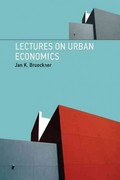Question
3. Housing prices and aggregate economic activity Consider the macroeconomic model of chapter 11. In addition to everything else consumers are subject to borrowing constraints
3. Housing prices and aggregate economic activity Consider the macroeconomic model of chapter 11. In addition to everything else consumers are subject to borrowing constraints that come from a problem of limited commitment. Consumers own housing (H) that is sold in the second period for a price p. They use housing as collateral of their loans so that the price of housing will affect aggregate demand.
(a) Pose the consumer's problem with a borrowing constraint.
(b) How does the borrowing constraint change the sensitivity of aggregate demand to the interest rate? (c) What happens to aggregate demand wen the price of housing decreases? Explain.
(d) What happens to aggregate supply wen the price of housing decreases? Explain. (e) What happens to the equilibrium output, labor, interest rate and wage when the price of housing decreases? Explain
Step by Step Solution
There are 3 Steps involved in it
Step: 1

Get Instant Access to Expert-Tailored Solutions
See step-by-step solutions with expert insights and AI powered tools for academic success
Step: 2

Step: 3

Ace Your Homework with AI
Get the answers you need in no time with our AI-driven, step-by-step assistance
Get Started


